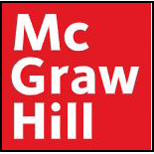
Concept explainers
a.
To calculate: The mean, standard deviation and coefficient of variation for both investments made by General Meters, that is, with firm A and with Firm B.
Introduction:
Mean:
It is the value estimated or anticipated to be earned in the future from an investment. It is computed by adding up the values obtained after multiplying each outcome with its probability.
Standard deviation (S.D):
A statistical tool that helps measure the deviation or volatility of an investment is termed as standard deviation. It is the square root of variance.
Coefficient of variation ( CoV ):
It is the ratio of SD (standard deviation) to the mean that shows the extent of variability of data in relation to the mean of the population.
b.
To determine : The alternative that brings a higher valuation,assuming that the investors are risk averse.
Introduction:
Merger:
An agreement between two existing companies that combines them to form a single company is termed as a merger. This is done for the expansion of business, share in the market, and value of shareholders.
Want to see the full answer?
Check out a sample textbook solution
Chapter 20 Solutions
FOUND.OF FINANCIAL MANAGEMENT-ACCESS
- What does a high price-to-earnings (P/E) ratio indicate? a) A company is undervalued.b) A company is overvalued.c) High investor confidence.d) Low profitability.arrow_forwardThe risk that cannot be eliminated through diversification is called: a) Market riskb) Credit riskc) Diversifiable riskd) Operational riskarrow_forwardNo AI The risk that cannot be eliminated through diversification is called: a) Market riskb) Credit riskc) Diversifiable riskd) Operational riskarrow_forward
- Don't use chatgpt Which of the following is a primary market transaction? a) Buying shares on a stock exchangeb) Buying bonds from a bondholderc) Initial Public Offering (IPO)d) Trading in derivativesarrow_forwardWhich of the following is a primary market transaction? a) Buying shares on a stock exchangeb) Buying bonds from a bondholderc) Initial Public Offering (IPO)d) Trading in derivativesarrow_forwardNo chatgpt! What is the term for a bond's fixed interest payment? a) Yieldb) Couponc) Principald) Discountarrow_forward
- No ai Which of the following is a primary market transaction? a) Buying shares on a stock exchangeb) Buying bonds from a bondholderc) Initial Public Offering (IPO)d) Trading in derivativesarrow_forwardWhat is the term for a bond's fixed interest payment? a) Yieldb) Couponc) Principald) Discountarrow_forwardNo Ai What is the term for a bond's fixed interest payment? a) Yieldb) Couponc) Principald) Discountarrow_forward
- I need help!! 12. A beta value of 1.5 indicates: a) Less risk than the marketb) Same risk as the marketc) 50% more risk than the marketd) 50% less risk than the marketarrow_forwardA portfolio with the highest expected return for a given level of risk is called: a) Risk-free portfoliob) Efficient portfolioc) Diversified portfoliod) Arbitrage portfolioarrow_forwarddon't use chatgpt!! The process of determining the present value of future cash flows is known as: a) Amortizationb) Discountingc) Capitalizationd) Compoundingarrow_forward

 Intermediate Financial Management (MindTap Course...FinanceISBN:9781337395083Author:Eugene F. Brigham, Phillip R. DavesPublisher:Cengage Learning
Intermediate Financial Management (MindTap Course...FinanceISBN:9781337395083Author:Eugene F. Brigham, Phillip R. DavesPublisher:Cengage Learning

